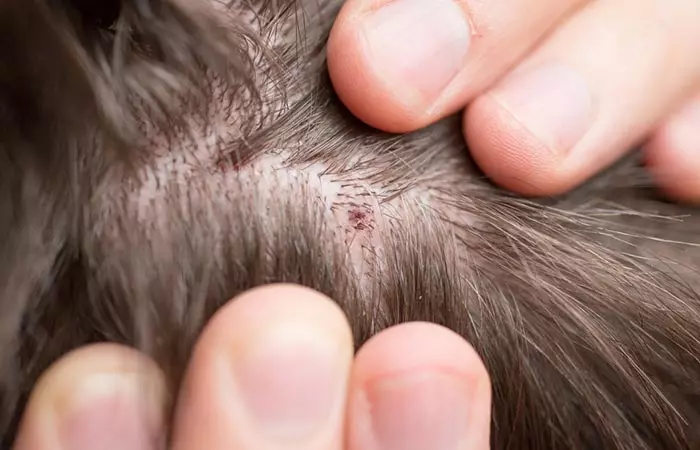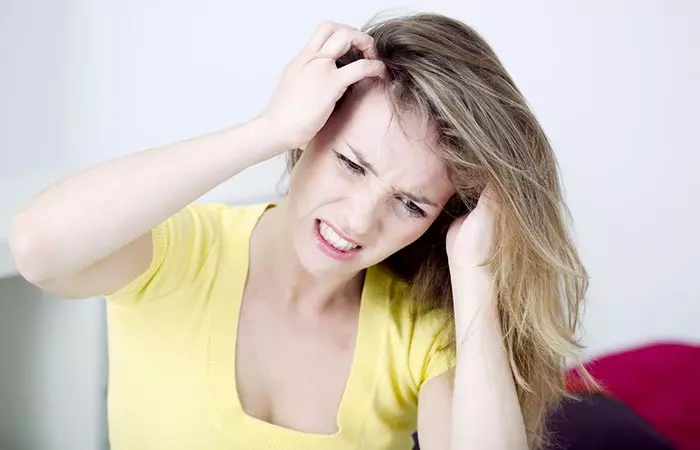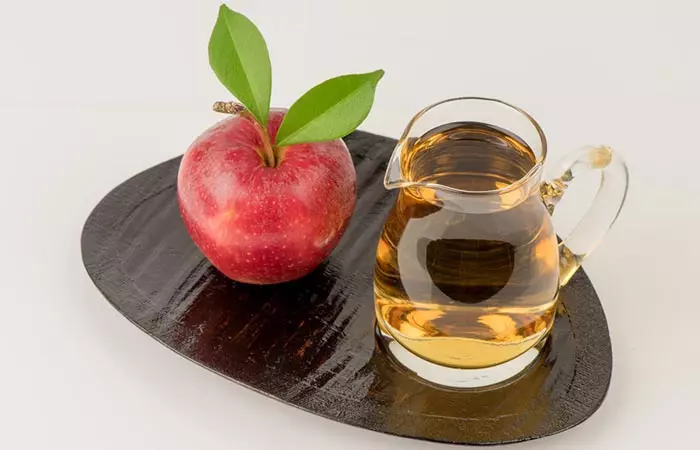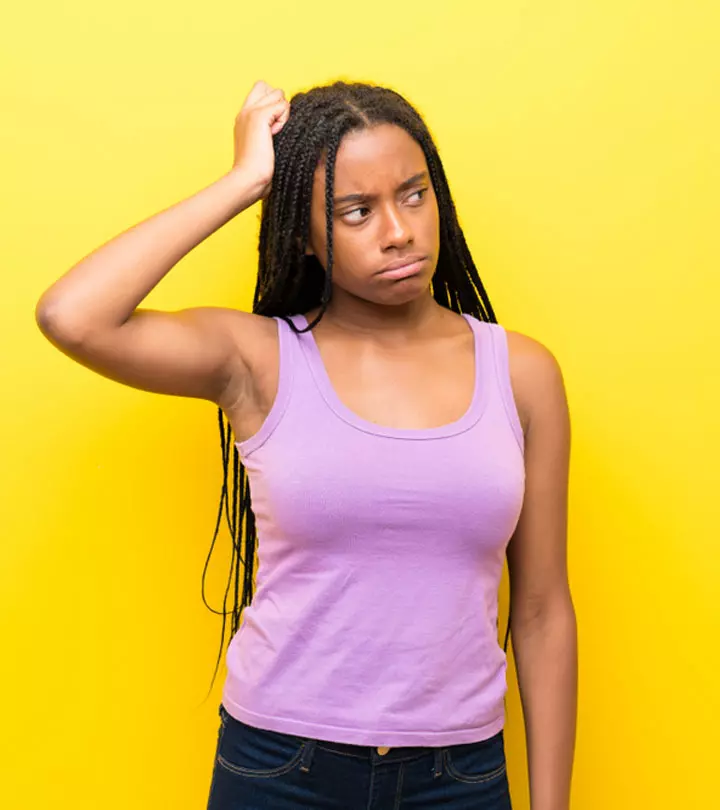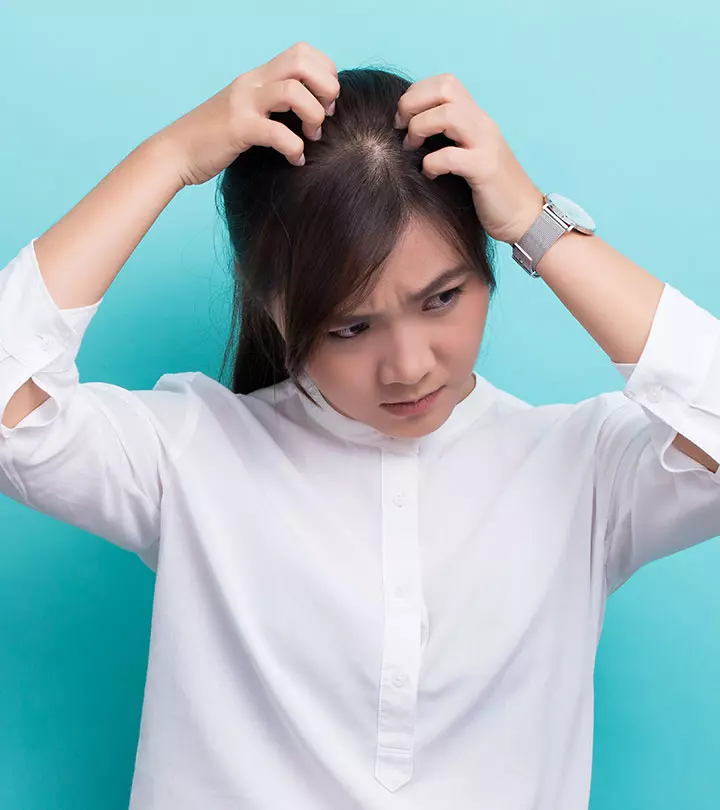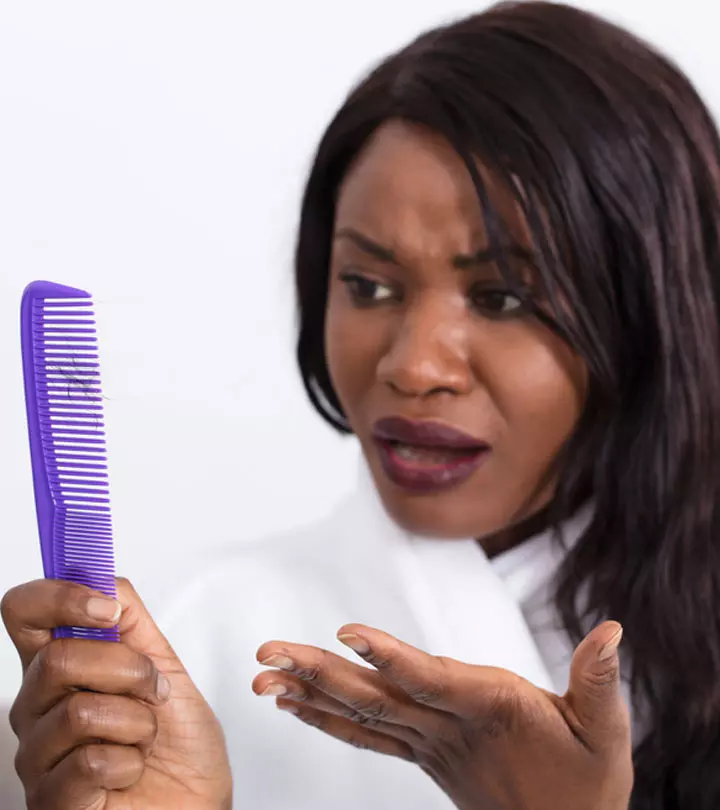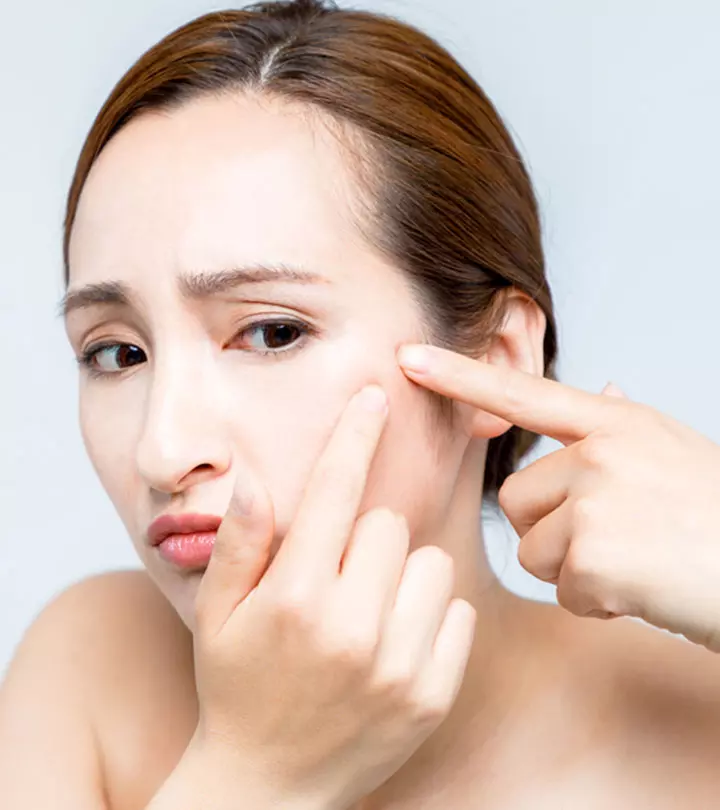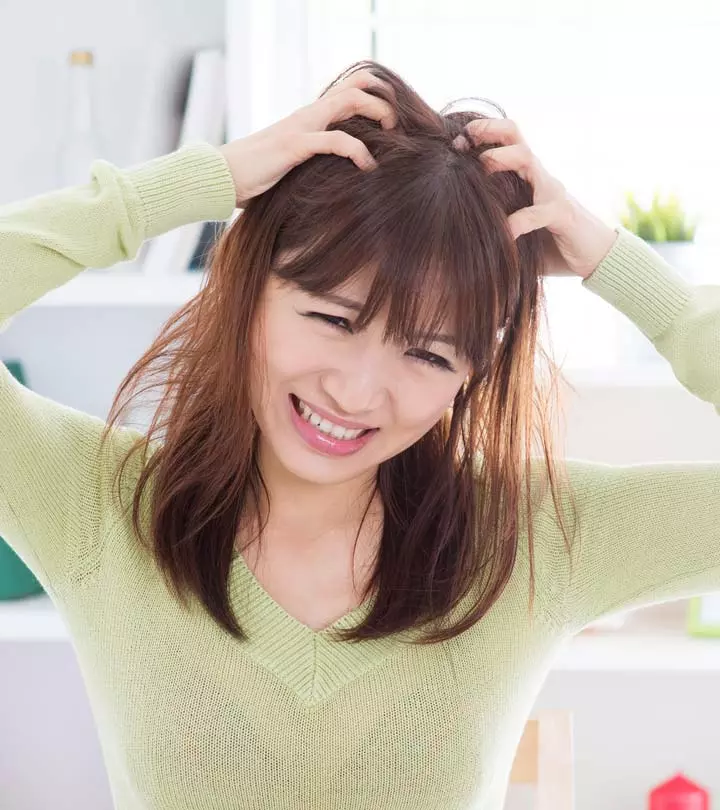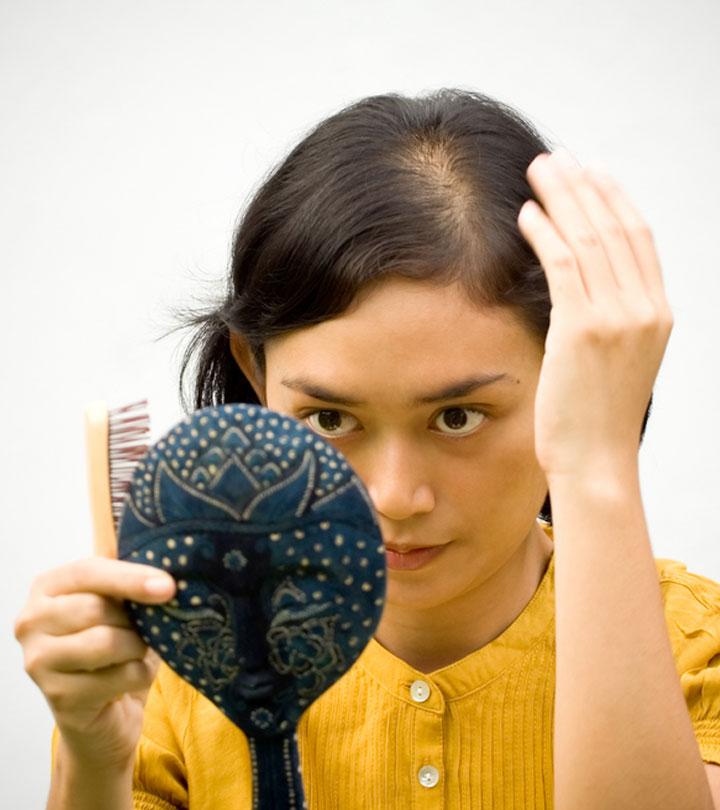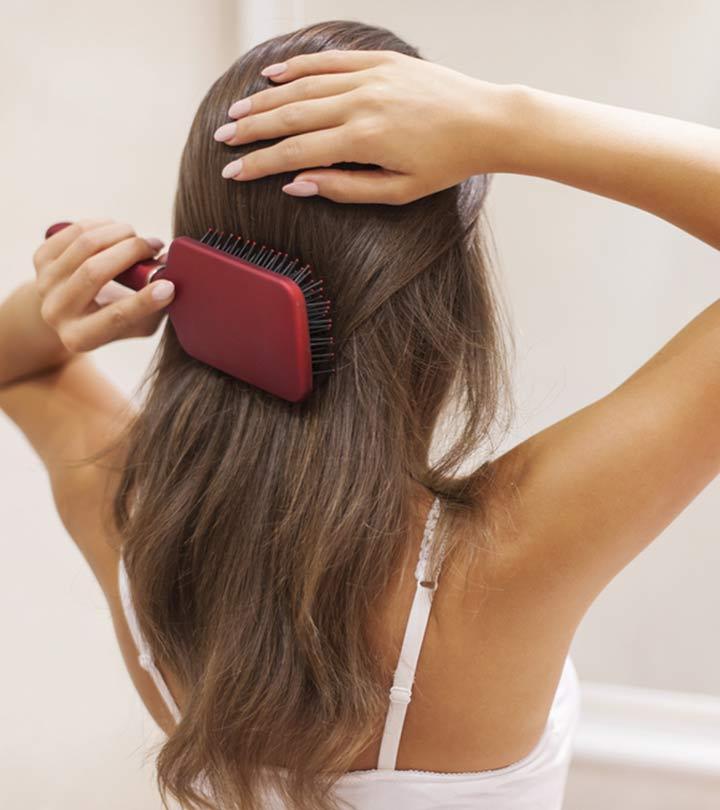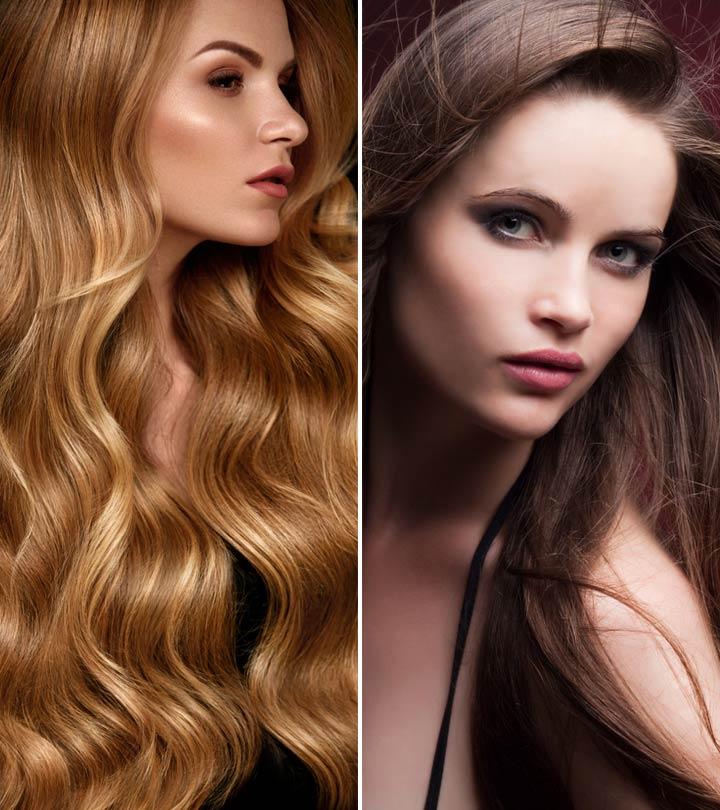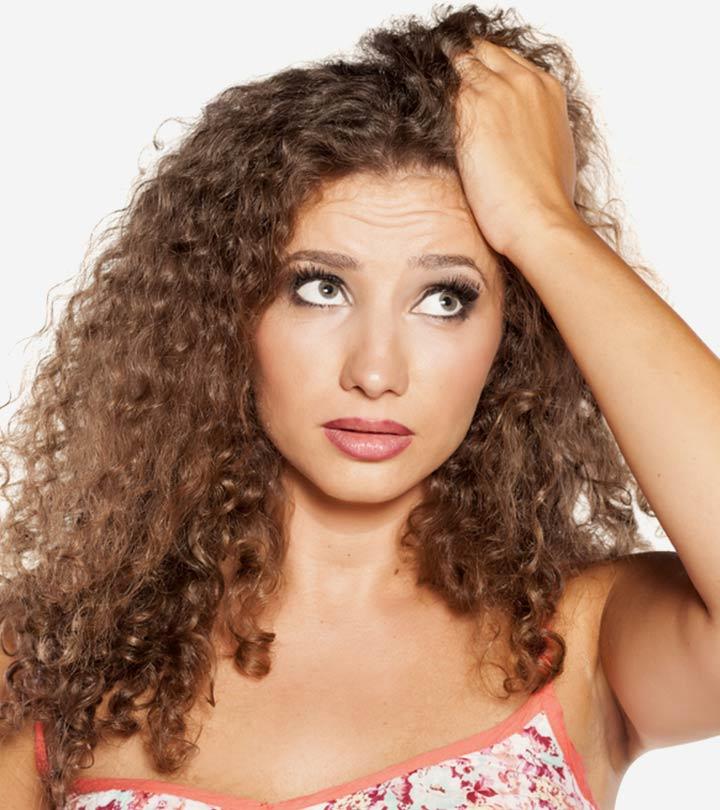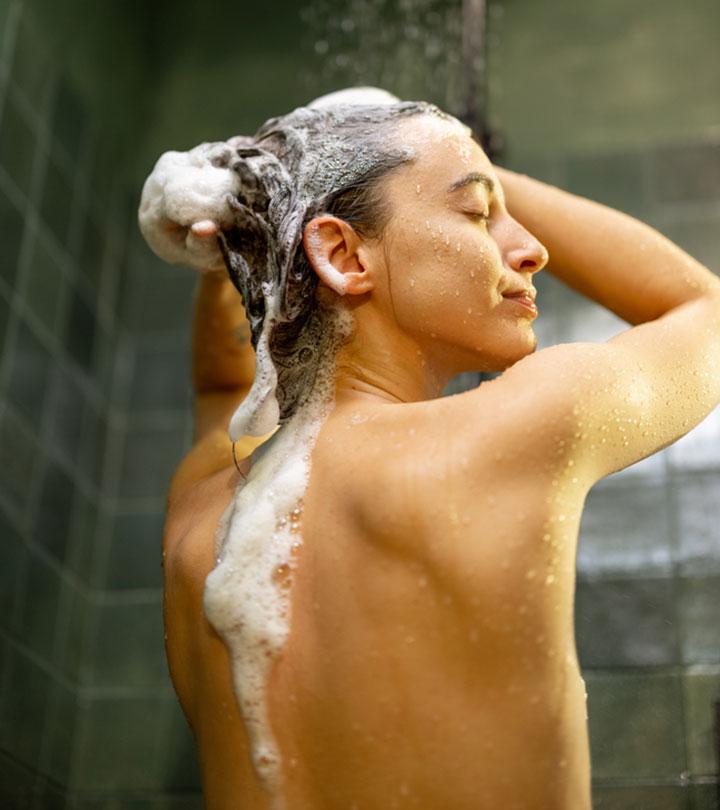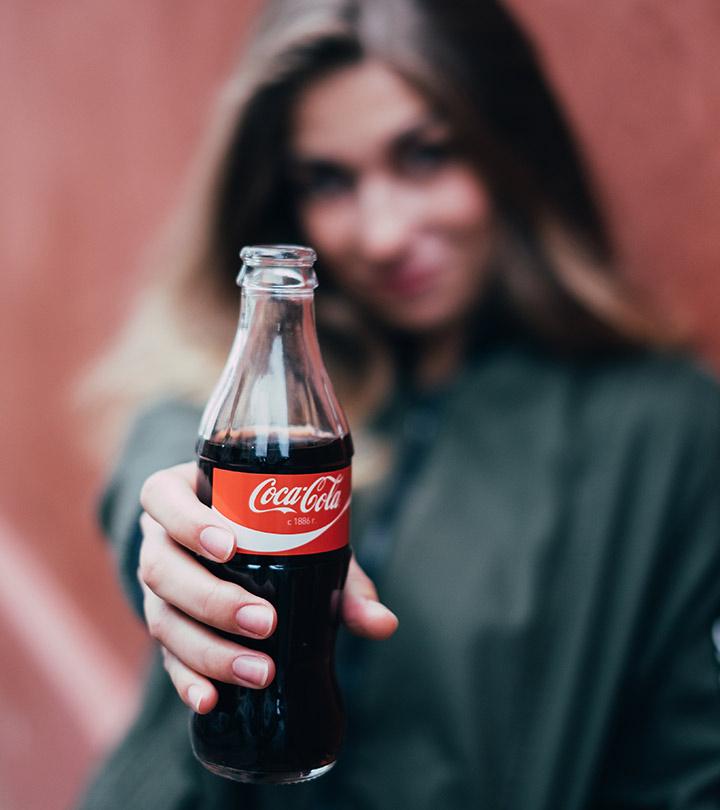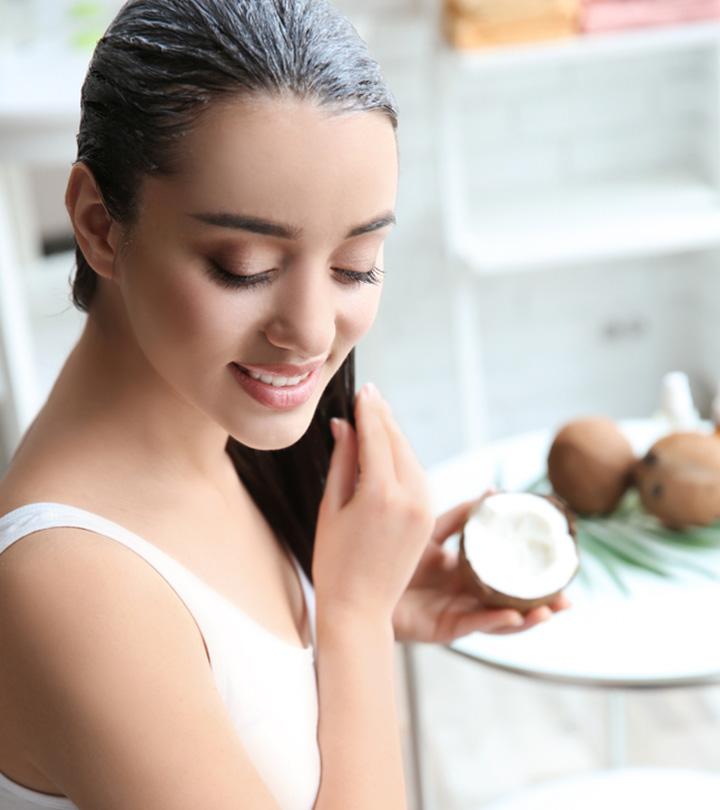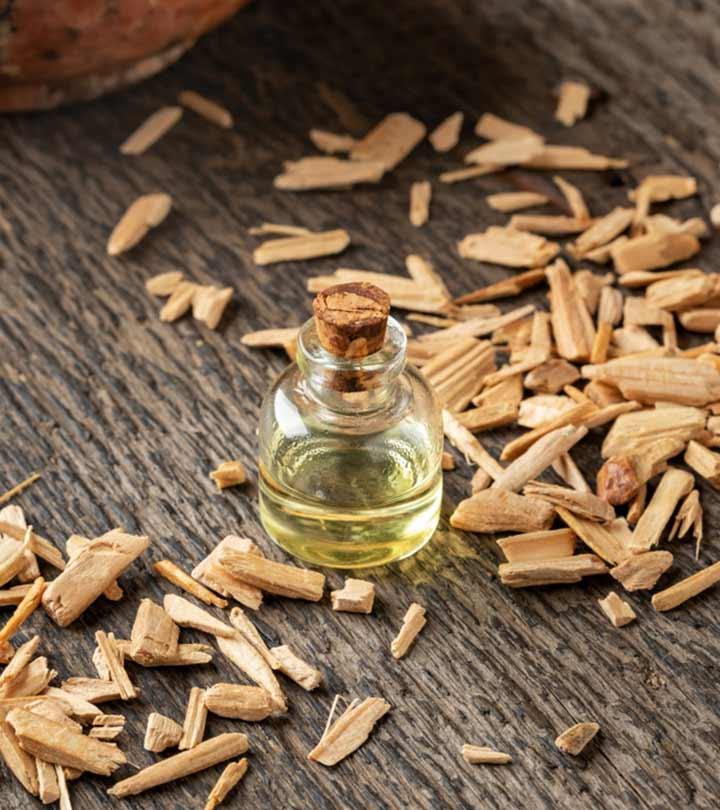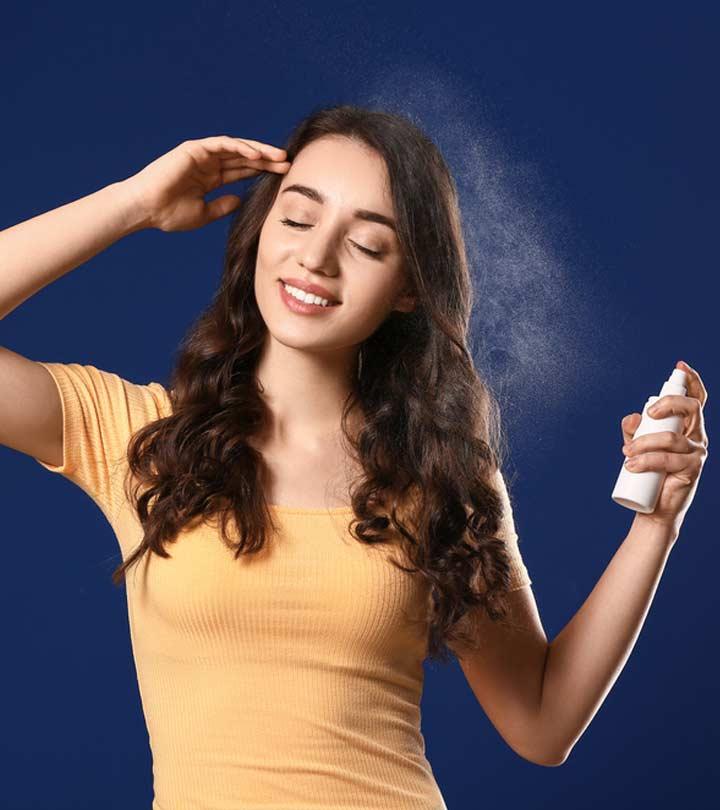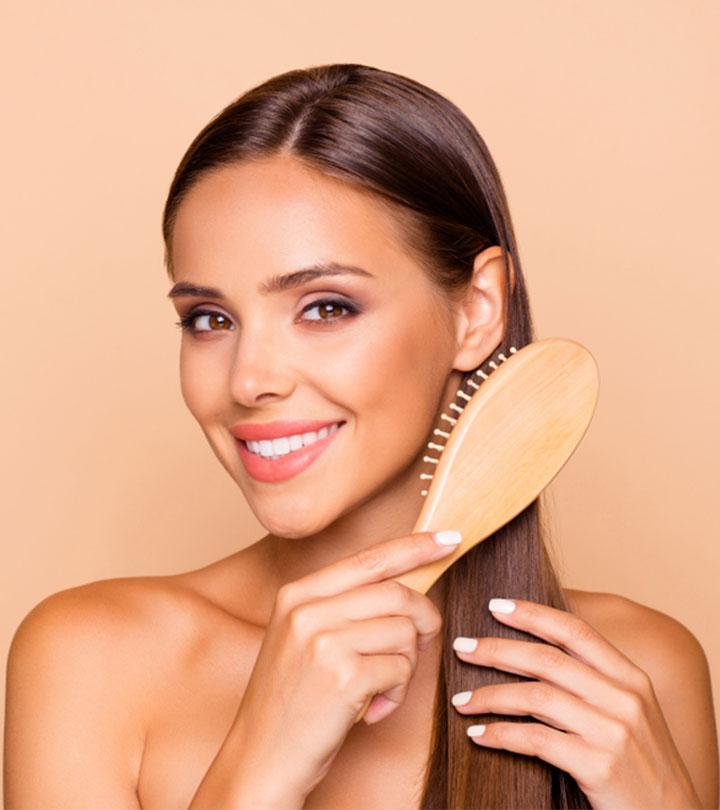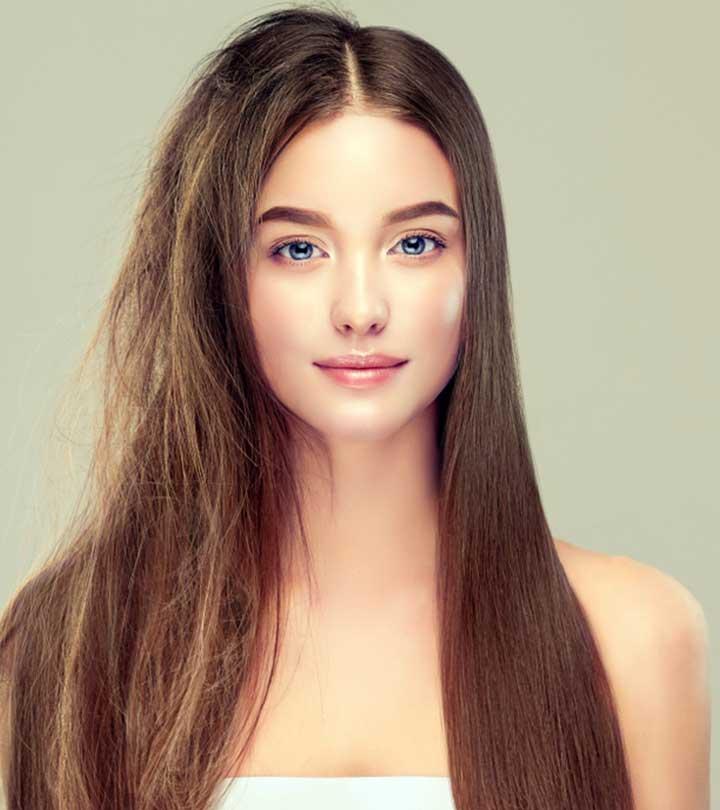How To Treat Scabs On The Scalp
Get rid of those itchy, scaly bumps on your scalp with natural home remedies.
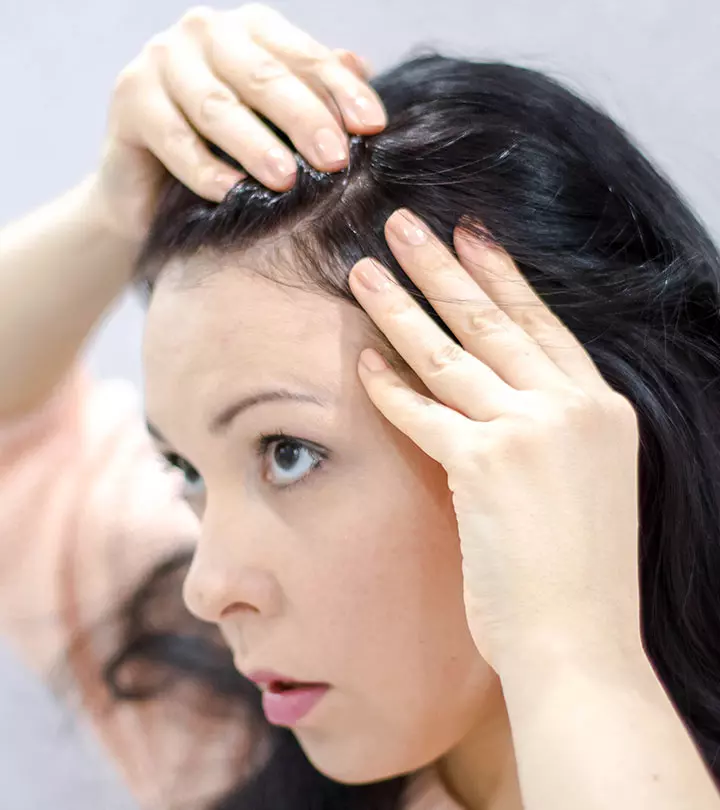
Image: Shutterstock
Do you have prickly, itchy, crusty bumps on your scalp that you can’t seem to stop scratching? Are you looking for ways to treat scabs on the scalp? Well, we have got your back. Having to scratch your scalp is painful, embarrassing, and uncomfortable. But understanding why they form and how to treat them can help.
This article discusses everything you need to learn about scabs and how to take care of your scalp. Keep reading to know more.
In This Article
What Are Scabs On The Scalp?
When you scratch your head constantly, the outer skin of your scalp gets damaged. The damaged skin heals itself with platelets that stick together to form clots that harden into scabs. These scabs are yellowish, reddish, brown, or black and extremely itchy. Scratching them too much can cause bleeding.
We now know what they are, but in the next section, let us understand why they itch.
Why Do Scabs Itch?
Scabs itch because the brain receives signals from nerves under the skin during the healing process that indicate stimulation. These signals are perceived as itching. Chemicals, such as histamine, that are released by the body in response to an injury can also contribute to the itching sensation. New skin growth and collagen expansion, resulting in the formation of a scab, can cause itchiness when the scab becomes dry and crusty. It’s important to resist the urge to scratch scabs because doing so can damage the new skin cells that aid in healing and set back the recovery process.
There are several reasons for the formation of scabs on scalps. They might be due to an oily scalp or an indication of a serious medical condition like eczema or psoriasisi A long-lasting autoimmune condition that causes itchy, scaly patches and inflammation on your skin . The key to treating scabs is knowing their exact cause. Here are a few possible causes.
What Causes Scabs On The Scalp?
- Oily Scalp: People with oily scalp are prone to dandruff, which can cause itching and make you scratch your head (1).This, in turn, can cause scabs.
- Seborrheic Dermatitis (Dandruff): Seborrheic dermatitis is a condition that is characterized by scaly patches and stubborn dandruff. The symptoms of this condition include itching and flaking without visible inflammation (2). But it is not contagious and can be treated easily with over-the-counter drugs or prescription medication (in severe cases).
- Scalp Psoriasis: Psoriasis is a chronic skin condition that occurs when you have an overactive immune system. It causes thick, red patches covered with silver, gray scales and occurs on certain body parts (3). When psoriasis patches appear on your scalp, they can form scabs.
- Lichen Planopilaris: If you notice red or purple bumps on your scalp that form scabs, you could have lichen planopilaris. It is an inflammatory condition that causes scaling and redness around your hair follicles and leads to scarring alopecia (hair loss) (4). The red and purple bumps that are a symptom of this condition can form scabs.
According to a cross-sectional study conducted by the All Of Us research program in 2022, the prevalence of lichen planopilaris was highest in the 65-74 year age group, followed by the 55-64 year age group. Out of the 327,654 participants, 142 had this condition. The prevalence of the condition was higher in women (91.6%).
- Ringworm: The term ‘ringworm’ is quite misleading here as it is not an actual ringworm but a fungal infection. This infection (also known as Tine a capitis) affects your scalp and hair shafts and forms circular marks of itchy, scaly skin. These marks usually have flat centers and raised borders that can form itchy scabs on the scalp (5).
- Scabies: Scabs can be formed due to scabies mites. Scabies is caused by the Sarcoptes scabiei mite, which burrows into the host. It causes itching and heavily crusted layers of skin (6). It is often seen in children, but it also affects men and women of all ages. This condition often affects the neck, scalp, face, eyelids, and the skin under the nails.
- Head Lice:Head lice are the worst asthey are highly contagious. Besides sucking blood, they also cause a ton of itching (7). Scratching your head persistently can cause wounds that lead to scabs formation.
- Shingles: It is a common misconception that chickenpox occurs only once in a human. The virus responsible for chickenpox can stay dormant in your body and get reactivated to cause shingles. The small, yellow blisters caused by shingles can also appear on your scalp and crust over to form scabs.
- Eosinophilic Folliculitis:This is a serious condition that affects people who have HIV/AIDS. Eosinophilic folliculitis is characterized by itchy, pus-filled lesions on your skin and scalp that can form scabs when they heal (8).
- Skin Inflammation: Itchy skin (called pruritus) is a common symptom of skin inflammation. This severe itching can cause the scalp to burn and scab (9).
- Contact Dermatitis: Contact dermatitis is a skin disorder caused due to allergic reactions or irritants. It causes the skin to become itchy, red, and lesioned (10).
- Impetigo: Impetigo is a common bacterial infection in kids between the ages of two to five years (11). It is characterized by honey-colored crusts on the skin and, in some cases, even the scalp.
- Scalp Acne: Acne vulgaris is a chronic skin inflammation that causes small bumps, redness, and lesions on the skin (12). It can be caused due to overproduction of sebum and appears on the face, neck, and back. It can also affect the scalp at times.
- Scalp Folliculitis: This is another chronic inflammatory condition that affects the hair follicles directly (12). It is characterized by yellowish-white scabs on the scalp.
- Skin Picking: Skin picking is a psychological disorder where people pick their skin over and over again, causing tissue damage (13). It can lead to scabs that become worse due to the constant pulling of skin.
Blogger T. Rowe’s scalp faced many distressing issues.. She recalls in her blog, “My scalp and I had been through many rough times. From scalp infections to scalp burns from relaxers that were left on too long, to color that had irritated my scalp and caused scabs, bumps, and most devastating, hair loss (i).” She attributed the scalp scabs to her usage of hair dyes and chemicals.
Scalp scabs can be difficult to identify and might even lead to bigger issues like severe hair loss,infections, and scalp inflammation. Here are a few symptoms you need to look out for along with the scabs.
Other Symptoms To Look Out For
- White/Yellow Scabs: Excess application of thick conditioners, ointments, lotions or hair cream can cause moisture to get trapped within the crust of the scab and develop pus, making it appear white. Yellow scabs, on the other hand, are an indication of infectious pus already formed in the scab that can develop into sores.
- Hair Loss: If you start losing hair on the spots on your scalp where you see red and purple bumps and scars, seek evaluation, as it could be due to a scarring hair loss, such as lupus or lichen planopilaris.
- Getting Scabs On The Same Spot: Recurring scabs on the scalp in the same spot could be a symptom of melanoma and needs to be treated immediately.
- Green Pus: There is a cause for concern if green pus comes out of your scalp scabs, as it is a sign of an infection.
Now, you don’t have to wonder “why do I have crusty scabs on my scalp?” and panic about what to do! Let’s take a look at the easy remedies to treat them.
Note: Please consult a doctor if you notice any of the above symptoms before trying the natural treatments below. Perform a patch test to ensure no adverse reactions occur.
How To Treat Scabs On The Scalp The Natural Way
Since scabs are a sign of your skin healing, they usually fall off and disappear on their own. However, if they are bothersome, you can use a few home remedies to quicken the healing process and get rid of the scabs. These scalp scab treatments can be done with ingredients that are present in your pantry.
How To Treat Scabs On The Scalp
- Warm Compress
- Aloe Vera Gel
- Lemon Juice
- Neem Leaves
- Apple Cider Vinegar
- Oatmeal
- Jojoba Oil
- Tea Tree Oil
- Olive Oil
- CoconutOil
- Fish Oil
1. Warm Compress
If the scabs on your scalp won’t heal, and are extra itchy, a warm compress is your best option. A warm compress softens your scabs and makes them fall off fast.
What You Need
- Towel
- Hot water
- Comb
What To Do
- Soak the towel in hot water.
- Wring out the excess water, roll up your hair, and wrap the towel around your head.
- Leave it on for 10-15 minutes.
- Remove the towel and comb out the scabs from your hair gently.
- Do this once daily for a few days.
2. Aloe Vera Gel
Aloe vera gel is an excellent soothing agent. Studies show that aloe vera can help soothe many of the causes of scabs, like seborrheic dermatitis, dandruff, eczema, and psoriasis (14), (15), (16). It helps reduce the pain and itching in and around the scabs on your scalp and prevents them from getting infected.
What You Need
- Aloe vera leaf
- 2 vitamin E capsules
What To Do
- Remove the gel from the aloe vera leaf.
- Squeeze out the oil from the vitamin E capsules and mix it with the aloe vera gel.
- Apply this mixture to the scalp scabs with your fingers.
- Leave it on for an hour.
- Wash off the mixture with a mild shampoo.
- Repeat this twice or thrice a week.
3. Lemon Juice
Lemon juice reduces dryness and itchiness of your scalp. Its antifungal activity can help treat dandruff and ringworm, which are major causes of a scab on the scalp (17), (18). Since it is a harsh ingredient, mix it with a gentle carrier oil.
What You Need
- ½ teaspoon lemon juice
- 1 tablespoon olive oil
What To Do
- Warm the olive oil in a microwave for a few seconds.
- Mix the lemon juice and warm olive oil.
- Massage the mixture onto your scalp.
- Leave the mixture on for half an hour.
- Wash it off with a mild shampoo.
- Do this thrice a week.
4. Neem Leaves
Neem leaves (Indian lilac) can help soothe itchy skin conditions. Their antifungal and antibacterial properties help in getting rid of the scabs and preventing the scalp from getting infected (19), (20).
What You Need
- 10-15 neem leaves
- 2 cups of water
What To Do
- Boil the neem leaves in two cups of water.
- Strain the water and let it cool down.
- Rinse your hair with this neem water every day.
5. Apple Cider Vinegar
Apple cider vinegar is hugely popular as a home remedy for a ton of skin and hair-related issues. It has antibacterial and anti fungal properties (21), (22). It also helps to balance the pH of your scalp to reduce dryness and itchiness. A Palestinian study showed that apple cider vinegar helped prevent dandruff along with other hair issues (23). It also acts as a hair cleanser and keeps the scalp clean.
What You Need
- 2 tablespoons apple cider vinegar
- 1 cup warm water
What To Do
- Mix the apple cider vinegar with water.
- Pour the mixture onto your scalp.
- Massage your scalp for a few minutes.
- Rinse off your hair with water.
- Follow this routine twice a week.
6. Oatmeal
This trusty (albeit bland) breakfast food does wonders for your skin and treats the scabs on your scalp. It soothes irritated skin and is highly moisturizing (24).Research shows that oats can help relieve and soothe itching, burning, scaling, and other scalp and skin discomforts (25).
What You Need
- 2 tablespoons uncooked oatmeal
- Water
What To Do
- Mix enough water with the oatmeal to form a thick paste.
- Apply the oatmeal paste over your scalp and leave it on for 10 minutes.
- Wash it off with a mild shampoo.
- Follow this once daily.
7. Jojoba Oil
Jojoba oil is touted as the miracle worker in skincare. It soothes inflammation, burning, bumps, and itching and helps in wound healing (26). It can help relieve eczema and psoriasis. Jojoba oil prevents the scalp from getting dry and stimulates hair growth. Its anti fungal properties can help protect the scalp from infections that can lead to scabs. It regulates the balance of natural oils of your scalp and, thus, reduces scabs.
What You Need
Jojoba oil
What To Do
- Massage a little jojoba oil onto your scalp before going to bed.
- Leave it on overnight.
- Wash it off the next morning with a mild shampoo.
- Follow this routine twice a week.
8. Tea Tree Oil
Tea tree oil has antifungal, antibacterial, antiseptic, and anti-inflammatory properties (27). It is effective in reducing dandruff and scalp lesions (28). It also prevents other scalp and skin disorders and relieves itching.
What You Need
- 1 teaspoon tea tree oil
- 2 tablespoons almond oil
What To Do
- Mix the tea tree and almond oils.
- Massage the mixture onto your scalp.
- Leave it on for 30 minutes.
- Wash off with a mild shampoo.
- Follow this routine thrice a week.
9. Olive Oil
Pamper your scalp while treating the scabs with olive oil. Not only does the hydrating squalene in it moisturize your scalp and help loosen up the scabs, but it also nourishes your hair and makes it super soft. Olive oil has been often used to treat many skin and scalp issues like dandruff, dermatitis, eczema, psoriasis, and rosaceai A common long-term inflammatory skin condition that causes redness and pus-filled bumps on the face. , which cause scaling and itching (29).
What You Need
4 tablespoons olive oil
What To Do
- Warm the olive oil in a microwave for a few seconds.
- Massage the oil onto your scalp. You can also apply it all over your hair.
- Leave it on overnight.
- Wash your hair the next morning with a mild shampoo.
- Repeat this thrice a week.
10. Coconut Oil
Coconut oil is a well-known hair and scalp moisturizer. It helps reduce scalp dryness and flaking (30). It also treats scalp issues like dandruff, eczema, and dermatitis and prevents headlice. You can also add witch hazel to it. Anecdotal evidence suggests that it may help control excess oil production.
What You Need
- Coconut oil
- Towel
What To Do
- Apply coconut oil all over your scalp.
- Warm a towel by running it under hot water and wring out the excess water.
- Wrap the towel around your head and leave it on for an hour.
- Wash off the oil with a mild shampoo.
- Follow this routine thrice a week.
 Quick Tip
Quick Tip11. Fish Oil Or Omega-3 Supplements
Fish oil is rich in fatty acidsandcan help treat skin issues like dermatitis and allergies (31). It contains omega-3 polyunsaturated fatty acids (PUFA), docosahexaenoic acid (DHA)i An omega-3 fat that slows down skin inflammation and is essential for the functional development of the brain in infants. , and eicosapentaenoic acid (EPA)i An omega-3 fatty acid with anti-inflammatory properties that helps protect skin from sun damage. that help protect the skin. Anecdotal evidence supports the use of omega-3 fatty acids for scalp health. It also contains alpha-linolenic acid (ALA)i Plant-based essential omega-3 fat found in many fats and oils that are necessary for human growth and development. and linoleic acid (LA), which are extremely beneficial for the skin. It is also beneficial for hair as it stimulates hair growth and keeps the scalp clean.
Besides these home remedies for scalp issues, some preventive care can also help relieve this problem.
- These scabs originate from scalp irritation, and thus avoiding scalp irritants can prevent them.
- Choose the right products for your skin and hair type. Opt for hair care products for sensitive scalp to minimize the risk of adverse effects.
- Get rid of impurities and product build-up that may irritate your skin with exfoliating scalp scrubs or a good hair and scalp detox.
- Rehydrate with hydrating scalp treatments, vitamin-rich hair and scalp treatments, or following dry scalp remedies along with a scalp massage for blood flow to improve circulation, nutrient distribution, and optimal sebum control for scalp health.
- If you’re a big spender, consider laser therapy for scalp issues. Anecdotal evidence suggests that it may help stimulate blood flow and promote hair growth as well.
- Itching these scabs lead to scalp blister formation which may result in scalp scarring. Invest in anti-itch scalp treatments or dandruff treatments to alleviate this issue.
- Antibacterial scalp treatments or antifungal scalp treatments can help tackle common scalp infections.
- In case you face a severe infection or dermatological problem, consult a trichologist and use medicated shampoos for scalp issues. Topical corticosteroid creams or topical retinoids for scalp health may also help.
- Diet and scalp health go hand in hand. Follow a healthy diet to moisturize your scalp and boost hair growth. Get started by looking for probiotics for scalp health.
Infographic: Natural Ways To Treat Scabs On The Scalp
Scalp issues might make you feel self-conscious in addition to making you uncomfortable and irritable. When something is wrong with your scalp, it may feel like all eyes are pulled to the top of your head.
But don’t worry! Check out the infographic to learn some of the simplest natural remedies to help you treat them. Illustration: StyleCraze Design Team
 Quick Tip
Quick TipTo recap, when your scalp gets damaged, this leads to the formation of scabs. These scabs can be caused due to an oily scalp or a medical condition like eczema, skin picking, or scalp acne. While scabs resolve on their own, in some cases you may need to use some home remedies to quicken the healing process. You can treat scabs on the scalp using natural ingredients such as aloe vera, lemon juice, coconut oil, oatmeal, neem leaves, and fish oil. By following the methods mentioned above, you will notice the scabs healing and your scalp becoming less itchy. However, we recommend consulting a doctor before using these remedies.
Frequently Asked Questions
How long does it take for a scab to fall off on its own?
Small scabs fall off within 3 to 7 days, whereas large ones could take up to 2 weeks to heal.
Is it okay to pick a scab?
No, you should not pick the scabs (the ones on your scalp and otherwise) as the skin underneath them is not completely healed, and you can be exposing the new delicate skin cells to infections.
What does it mean when a scab is black?
There is no need to worry if the scabs on your scalp are black. It means that a little more than usualblood flowed out of the wound before it clotted and became a scab.
Is Vaseline good for scabs?
Yes, Vaseline helps keep your scabs moist and prevents any chances of infection or skin dryness.
Does peroxide help scabs?
No. The use of peroxide delays the process of healing and should be avoided.
Key Takeaways
- Oily scalp, scalp acne, eczema, or skin-picking disorder are some of the symptoms of scalp scabs.
- Lemon juice, coconut oil, neem leaves, oatmeal, aloe vera, and fish oil may help treat scabs on the scalp.
- Jojoba oil may help soothe inflammation, itching, and help in wound healing.
- Olive oil may moisturize the scalp and help loosen up the scabs.
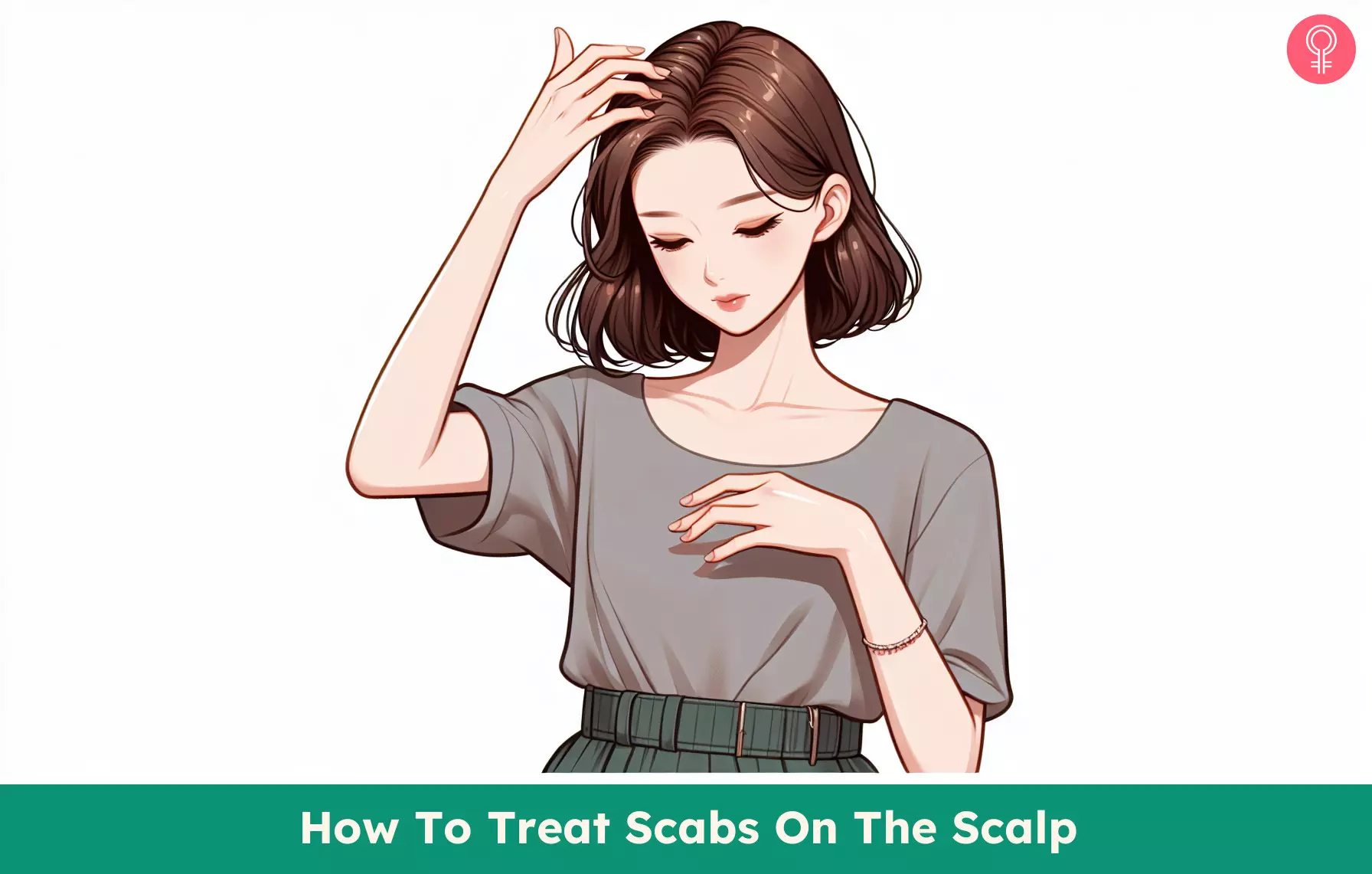
Image: Dall·E/StyleCraze Design Team
Check out this video for pro tips to manage scalp scabs, itching, white flakes, and dryness. Discover effective strategies for relief and healthy scalp care.
Personal Experience: Source
StyleCraze's articles are interwoven with authentic personal narratives that provide depth and resonance to our content. Below are the sources of the personal accounts referenced in this article.
i. Two Years In The Game! Happy Nappiversary To Me!!https://trowescandal.wordpress.com/2013/10/03/two-years-in-the-game-happy-nappiversary-to-me/
References
Articles on StyleCraze are backed by verified information from peer-reviewed and academic research papers, reputed organizations, research institutions, and medical associations to ensure accuracy and relevance. Read our editorial policy to learn more.
- Bin Saif, Ghada A et al. “The itchy scalp–scratching for an explanation.” Experimental dermatology vol. 20,12 (2011): 959-68
https://www.ncbi.nlm.nih.gov/pmc/articles/PMC3233984/ - Borda, Luis J, and Tongyu C Wikramanayake. “Seborrheic Dermatitis and Dandruff: A Comprehensive Review.” Journal of clinical and investigative dermatology vol. 3,2 (2015): 10.13188/2373-1044.1000019.
https://www.ncbi.nlm.nih.gov/pmc/articles/PMC4852869/ - Blakely, Kim, and Melinda Gooderham. “Management of scalp psoriasis: current perspectives.” Psoriasis (Auckland, N.Z.) vol. 6 33-40.
https://www.ncbi.nlm.nih.gov/pmc/articles/PMC5683126/ - Kang, Hoon et al. “Lichen planopilaris.” Dermatologic therapy vol. 21,4 (2008): 249-56.
https://pubmed.ncbi.nlm.nih.gov/18715294/ - Leung, Alexander K C et al. “Tinea Capitis: An Updated Review.” Recent patents on inflammation & allergy drug discovery vol. 14,1 (2020): 58-68.
https://pubmed.ncbi.nlm.nih.gov/31906842/ - Walton, Shelley F, and Bart J Currie. “Problems in diagnosing scabies, a global disease in human and animal populations.” Clinical microbiology reviews vol. 20,2 (2007): 268-79.
https://www.ncbi.nlm.nih.gov/pmc/articles/PMC1865595/ - Smith, Christine H, and Ran D Goldman. “An incurable itch: head lice.” Canadian family physician Medecin de famille canadien vol. 58,8 (2012): 839-41.
https://www.ncbi.nlm.nih.gov/pmc/articles/PMC3418981/ - Nomura, Takashi, et al. “Eosinophilic pustular folliculitis: A proposal of diagnostic and therapeutic algorithms.” The Journal of Dermatology 43.11 (2016): 1301-1306.
https://onlinelibrary.wiley.com/doi/full/10.1111/1346-8138.13359 - Tivoli, Yvette A, and Richard M Rubenstein. “Pruritus: an updated look at an old problem.” The Journal of clinical and aesthetic dermatology vol. 2,7 (2009): 30-6.
https://www.ncbi.nlm.nih.gov/pmc/articles/PMC2924137/ - Novak-Bilić, Gaby et al. “IRRITANT AND ALLERGIC CONTACT DERMATITIS – SKIN LESION CHARACTERISTICS.” Acta clinica Croatica vol. 57,4 (2018): 713-720.
https://www.ncbi.nlm.nih.gov/pmc/articles/PMC6544100/ - Hartman-Adams, Holly et al. “Impetigo: diagnosis and treatment.” American family physician vol. 90,4 (2014): 229-35.
https://pubmed.ncbi.nlm.nih.gov/25250996/ - Sun, Kai-Lv, and Jian-Min Chang. “Special types of folliculitis which should be differentiated from acne.” Dermato-endocrinology vol. 9,1 e1356519.
https://www.ncbi.nlm.nih.gov/pmc/articles/PMC5821164/ - Lochner, Christine et al. “Excoriation (skin-picking) disorder: a systematic review of treatment options.” Neuropsychiatric disease and treatment vol. 13 1867-1872.
https://www.ncbi.nlm.nih.gov/pmc/articles/PMC5522672/ - Vardy, D. A., et al. “A double-blind, placebo-controlled trial of an Aloe vera (A. barbadensis) emulsion in the treatment of seborrheic dermatitis.” Journal of dermatological treatment 10.1 (1999): 7-11.
https://www.tandfonline.com/doi/abs/10.3109/09546639909055904 - Kumar, KP Sampath, and Bhowmik Debjit. “Aloe vera: a potential herb and its medicinal importance.” Journal of chemical and Pharmaceutical Research 2.1 (2010): 21-29.
https://www.researchgate.net/publication/328630465_Aloe_vera_A_Potential_Herb_and_its_Medicinal_Importance - Syed, T A et al. “Management of psoriasis with Aloe vera extract in a hydrophilic cream: a placebo-controlled, double-blind study.” Tropical medicine & international health : TM & IH vol. 1,4 (1996): 505-9.
https://pubmed.ncbi.nlm.nih.gov/8765459/ - Pingili, Mamatha, et al. “Antifungal activity of plant extracts against dandruff causing organism Malassezia furfur.” Int J Bioassays 5 (2016): 5047-5049.
https://www.researchgate.net/publication/309599093_Antifungal_activity_of_plant_extracts_against_dandruff_causing_organism_Malassezia_furfur - Pinontoan, Sabrina, et al. “Antifungal Activity of Essential Oil Extract of Lemon Cui (Citrus microcarpa) Skin against Trichophyton rubrum Growth.” International Journal of Pharma Medicine and Biological Sciences 8.2 (2019): 40-44.
http://www.ijpmbs.com/uploadfile/2019/0507/20190507051234783.pdf - Subapriya, R, and S Nagini. “Medicinal properties of neem leaves: a review.” Current medicinal chemistry. Anti-cancer agents vol. 5,2 (2005): 149-6.
https://pubmed.ncbi.nlm.nih.gov/15777222/ - Niharika, Anand, Johnson M. Aquicio, and Arulsamy Anand. “Antifungal properties of neem (Azadirachta indica) leaves extract to treat hair dandruff.” E-ISRJ 2 (2010): 244-52.
https://www.researchgate.net/publication/333671637_ANTIFUNGAL_PROPERTIES_OF_NEEM_AZARDIRACHTA_INDICA_LEAVES_EXTRACT_TO_TREAT_HAIR_DANDRUFF - Gopal, Judy et al. “Authenticating apple cider vinegar’s home remedy claims: antibacterial, antifungal, antiviral properties and cytotoxicity aspect.” Natural product research vol. 33,6 (2019): 906-910.
https://pubmed.ncbi.nlm.nih.gov/29224370/ - Yagnik, Darshna et al. “Antimicrobial activity of apple cider vinegar against Escherichia coli, Staphylococcus aureus and Candida albicans; downregulating cytokine and microbial protein expression.” Scientific reports vol. 8,1 1732.
https://www.ncbi.nlm.nih.gov/pmc/articles/PMC5788933/ - Zaid, Abdel Naser et al. “Ethnopharmacological survey of home remedies used for treatment of hair and scalp and their methods of preparation in the West Bank-Palestine.” BMC complementary and alternative medicine vol. 17,1 355.
https://www.ncbi.nlm.nih.gov/pmc/articles/PMC5499037/ - Pazyar, Nader et al. “Oatmeal in dermatology: a brief review.” Indian journal of dermatology, venereology and leprology vol. 78,2 (2012): 142-5
https://pubmed.ncbi.nlm.nih.gov/22421643/ - Reynertson, Kurt A et al. “Anti-inflammatory activities of colloidal oatmeal (Avena sativa) contribute to the effectiveness of oats in treatment of itch associated with dry, irritated skin.” Journal of drugs in dermatology : JDD vol. 14,1 (2015): 43-8.
https://pubmed.ncbi.nlm.nih.gov/25607907/ - Arafat, Shaker M., and Amany M. Basuny. “Jojoba oil: Anew media for frying process.” Current Trends in Biomedical Engineering & Biosciences 2018; 17(1): 555952.
https://juniperpublishers.com/ctbeb/pdf/CTBEB.MS.ID.555952.pdf - Carson, C F et al. “Melaleuca alternifolia (Tea Tree) oil: a review of antimicrobial and other medicinal properties.” Clinical microbiology reviews vol. 19,1 (2006): 50-62.
https://www.ncbi.nlm.nih.gov/pmc/articles/PMC1360273/ - Satchell, Andrew C et al. “Treatment of dandruff with 5% tea tree oil shampoo.” Journal of the American Academy of Dermatology vol. 47,6 (2002): 852-5.
https://pubmed.ncbi.nlm.nih.gov/12451368/ - Aburjai, Talal, and Feda M. Natsheh. “Plants used in cosmetics.” Phytotherapy Research: An International Journal Devoted to Pharmacological and Toxicological Evaluation of Natural Product Derivatives 17.9 (2003): 987-1000.
https://www.researchgate.net/publication/9027603_Plants_Used_in_Cosmetics - Vala, G. S., and P. K. Kapadiya. “Medicinal benefits of coconut oil.” International Journal of Life Sciences Research, ISSN (2014): 2348-3148.
https://www.researchgate.net/publication/268805677_Medicinal_benefit_of_coconut_oil - Huang, Tse-Hung et al. “Cosmetic and Therapeutic Applications of Fish Oil’s Fatty Acids on the Skin.” Marine drugs vol. 16,8 256.
https://pubmed.ncbi.nlm.nih.gov/30061538/
Read full bio of Dr. Vindhya L Veerula
Read full bio of Ramona Sinha
Read full bio of Krati Darak





